Examples of Pictures at Different Shutter Speeds
BLACK FRIDAY SALE - USE CODE: "BLACK GALAXY"
20% OFF YOUR COURSE
CAPTURE THE MILKY WAY
MASTER THE MILKY WAY PHOTOGRAPHY
62 VIDEO LESSONS | 23+ HOURS OF CONTENT
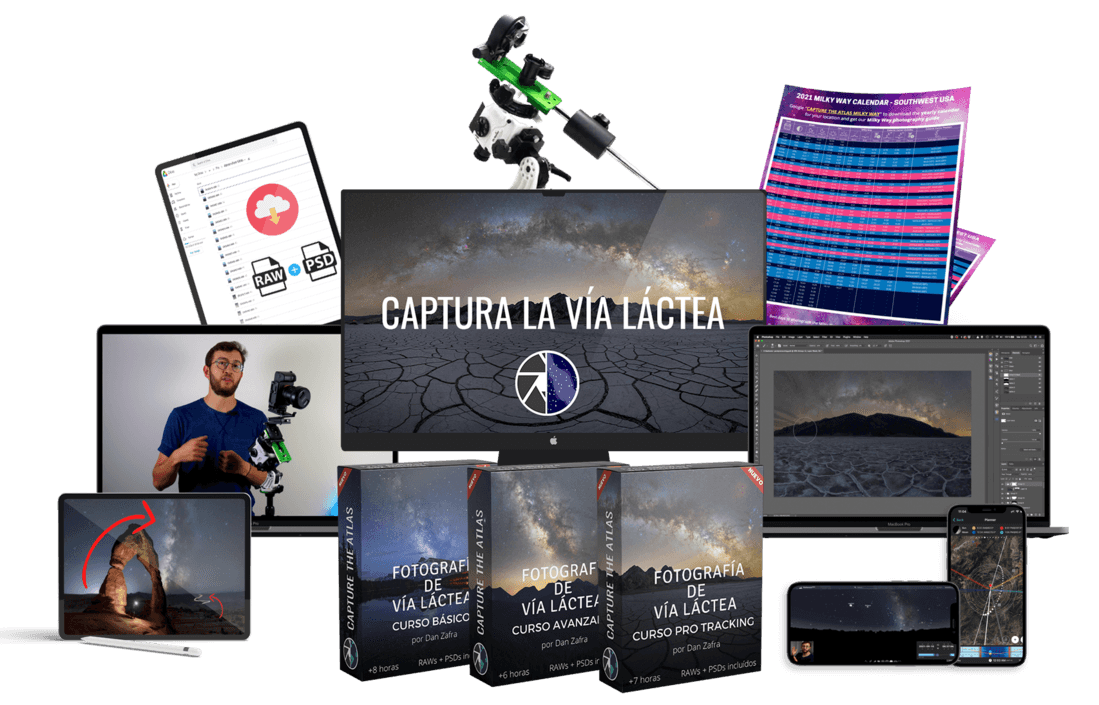
Shutter speed in photography is one of the essential things to understand, and it forms, along with aperture and ISO, the basics of the Exposure Triangle.
Besides its key role in exposure, there are other important shutter speed effects on photography: motion and shakiness, two key things for capturing the image you want.
Apart from shutter speed effects, it's also fundamental to know what a fast and slow shutter speed are, and how an image changes depending on this setting.
In this shutter speed guide, you'll find all the basics of shutter speed in photography, how the effects of shutter speed open up a world of possibilities in photography, and what's the best shutter speed in the most popular photography genres.
- What is shutter speed in photography?
- Shutter speed and exposure
- Shutter speed and motion
- Shutter speed and camera shake
- What is the best shutter speed in photography?
- Shutter speed photography examples
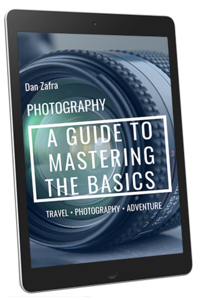
GET OUR FREE EBOOK TO
MASTER THE PHOTOGRAPHY BASICS
20 LESSONS AND 80+ PAGES WITH EXAMPLES, INFOGRAPHICS, TIPS, AND MORE!
What is shutter speed in photography?
Shutter speed in photography is the time that the camera shutter is open and, therefore, capturing and exposing light.
In film and digital cameras, the sensor is covered by a thin "curtain" that controls the amount of light that passes through the lens. This "curtain" is called the shutter.
The shutter is a fundamental piece in any camera, since it'll determine the final exposure time and the motion that will be captured.
One of the best photography tips for beginners is to learn what shutter speed is through practical exercises in which you vary this setting in manual mode.
How to measure shutter speed
Shutter speed is measured in seconds and fractions of a second, following a sequence like this:
"…5″, 2″, 1″,½, ¼, 1/8, 1/15, 1/30, 1/60, 1/125, 1/250, 1/500…"
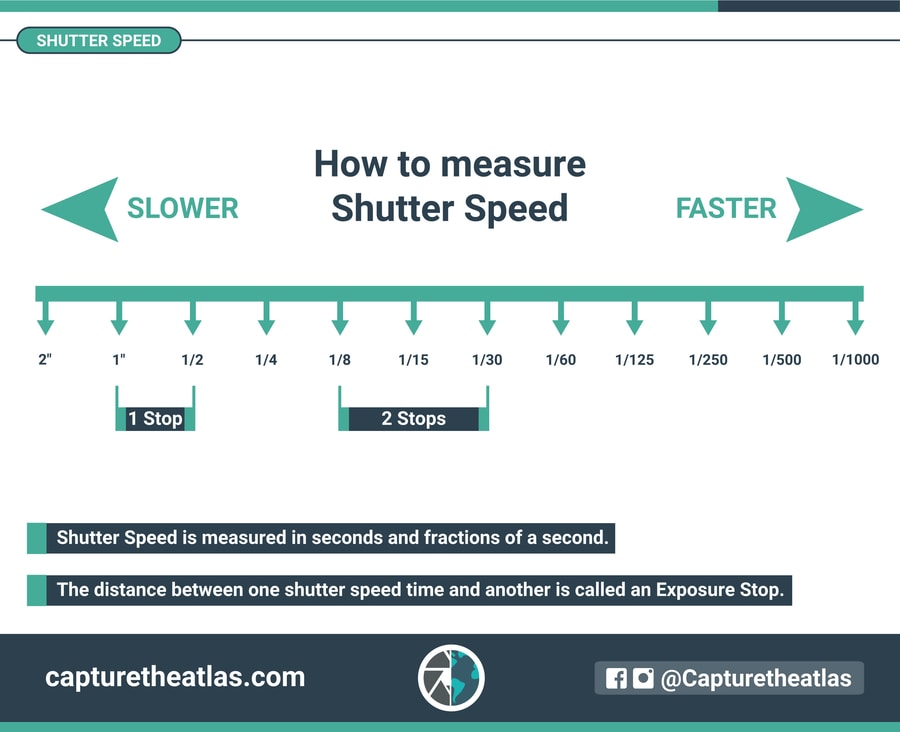
As we move from the left to the right, the shutter speed will be faster, with, for example, ½ indicating half a second and 1/2000 being a two-thousandth fraction of a second.
The distance between one shutter speed time and another is called an exposure stop, and increasing or reducing one stop in the shutter speed will double or halve the total exposure time.
Understanding how shutter speed is measured is essential before talking about the types of shutter speed in photography that you'll see now.
What is a fast shutter speed in digital photography?
It's essential to consider the terms fast shutter speed and slow shutter speed to understand the shutter speed effects in photography that you'll see below.
We speak about fast shutter speed when the camera shutter is open for a very short time, generally a length of time below 1/60th of a second.
The fastest shutter speed in photography depends on the camera, but in most of the standard digital cameras on the market, it's 1/4000th of a second.
Fast shutter speeds are generally used to reduce time and freeze the moment. For example, in wildlife photography, fast shutter speeds are used to capture a bird flying in the sky.
What is a slow photography shutter speed?
On the other hand, a slow shutter speed is when the camera shutter is open for a longer time, usually above 1/60th of a second.
The slowest shutter speed in cameras is usually 30 seconds, but you can increase this time by using an even slower shutter speed through the Bulb camera mode and a remote shutter.
Slow shutter speeds are used to increase time and capture motion. For example, you can set a slow shutter speed to photograph the movement of the water in a river.
Slow shutter speed photography is also known as long exposure photography. For this type of photography, you'll need a tripod and photography lens filters if you're doing daytime long exposure photography.
How shutter speed and exposure are related in photography
The first shutter speed effect on photography is the change in exposure. By leaving the camera shutter up or down for a specific period of time, the sensor will capture more or less light, which will translate into a brighter or darker exposure.
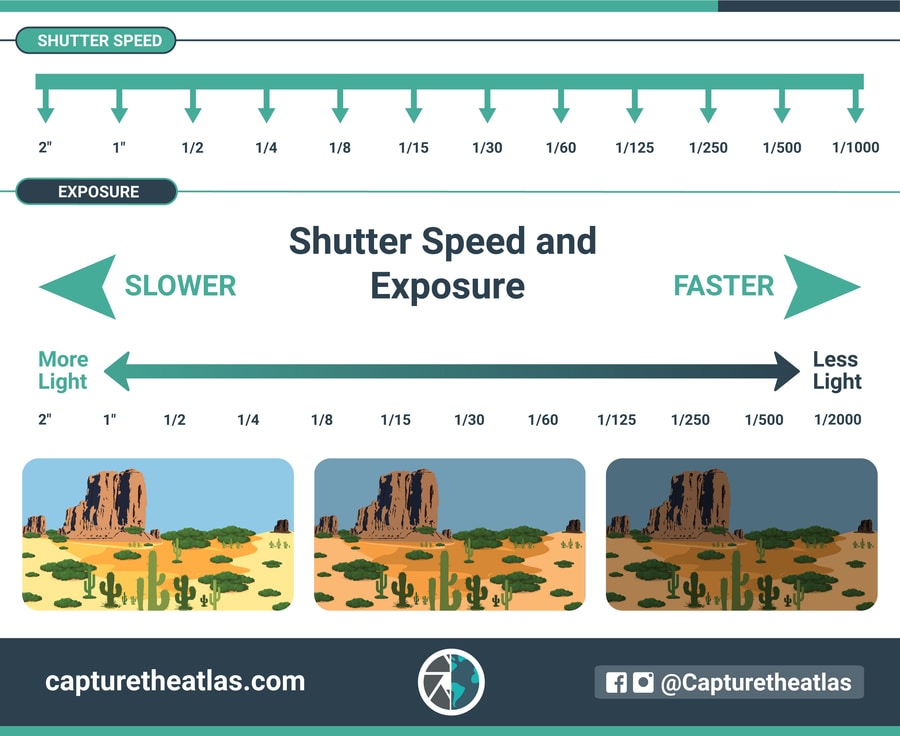
In this way, considering that other elements affecting exposure (aperture and ISO) are set, the faster the shutter speed, the darker the image will be, and the slower the shutter speed, the brighter the image will be.
Sometimes there are limits to raise/lower the ISO and to change the aperture, so, in these cases, the shutter speed will be essential for changing the exposure of the photo. Besides, setting a slow shutter speed will be essential in long exposure night photography to increase the exposure of the image so that it isn't too dark.
Understanding shutter speed and motion
The second and most important effect of shutter speed on photography is motion.
By using a slower or faster shutter speed, you'll be able to capture a more static or dynamic image, something that is also known as motion in photography.
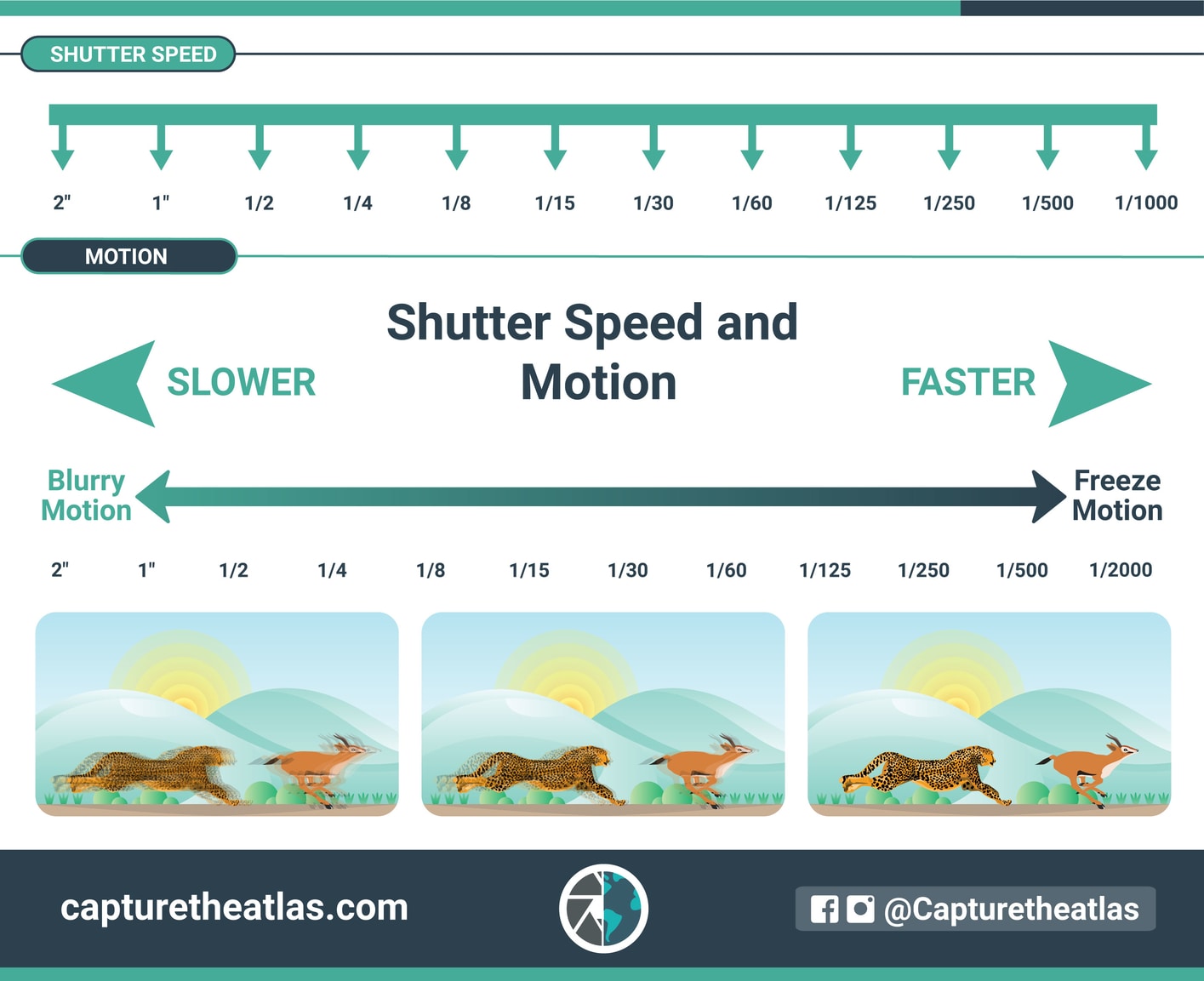
Motion in photography is an essential element; you can use it to convey the feeling that the subject is moving, to blur some parts of the image with an artistic purpose, or to eliminate moving elements and distractions. However, choosing the wrong shutter speed can result in a loss of sharpness and clarity in our photos.
At the end of the article, you'll see some real examples of shutter speed and motion in photography.
Shutter speed and camera shake
The last effect of shutter speed in photography is the shakiness of the camera. The speed at which you're shooting, along with the focal length, will determine if you can shoot handheld or if you need to use some form of stabilization like a tripod, the best way to get sharp photos.
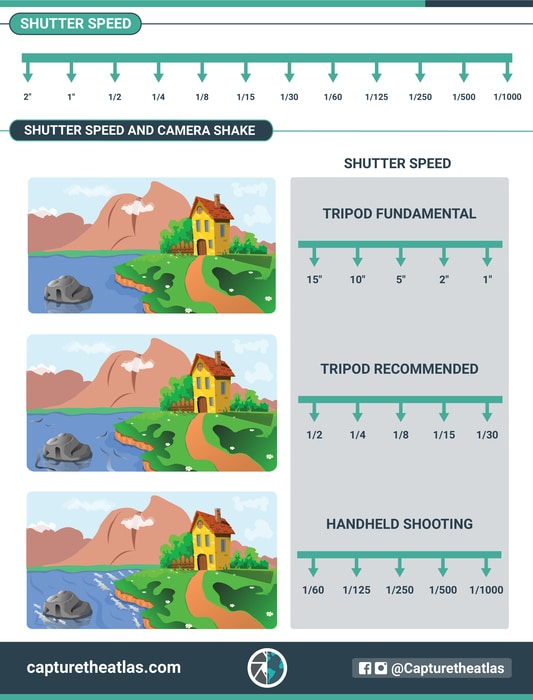
The minimum shutter speed rule for shooting handheld says that you shouldn't use a slower shutter speed than your camera focal length.
For example, if you're shooting with a 35 mm, you should use shutter speed settings faster than 1/35th of a second to avoid shakiness.
However, take this shutter speed rule with a pinch of salt, since there is no best shutter speed for shooting handheld. The crop factor of your sensor and the use of long focal length will affect the shutter speed that you can use.
In some cases, we may mistakenly use a slower shutter speed than we need to get sharp photos. Although the ideal is to get the sharp photo directly from the camera, if the photo is a little blurry, don't worry. You can correct it later using a software to fix blurry pictures. I normally use Topaz Sharpen AI.
Setting Shutter speed On a camera
To set the shutter speed on a camera, you can do it through any of the following ways:
- Manual: Shooting in manual mode (M), you can manually set the shutter speed after the ISO and aperture according to the exposure that you'd like to shoot.
- Automatic: Shooting in Aperture mode (A), you can manually set the aperture and ISO, and the camera will automatically adjust to the best shutter speed.
In film cameras, the shutter speed button used to be on the top right of the camera, which is where you can find the camera modes on most modern cameras.
Today, the shutter speed dial is usually on the top right of the back of the camera. Moving the wheel, you'll decrease or increase the shutter speed according to your camera settings.
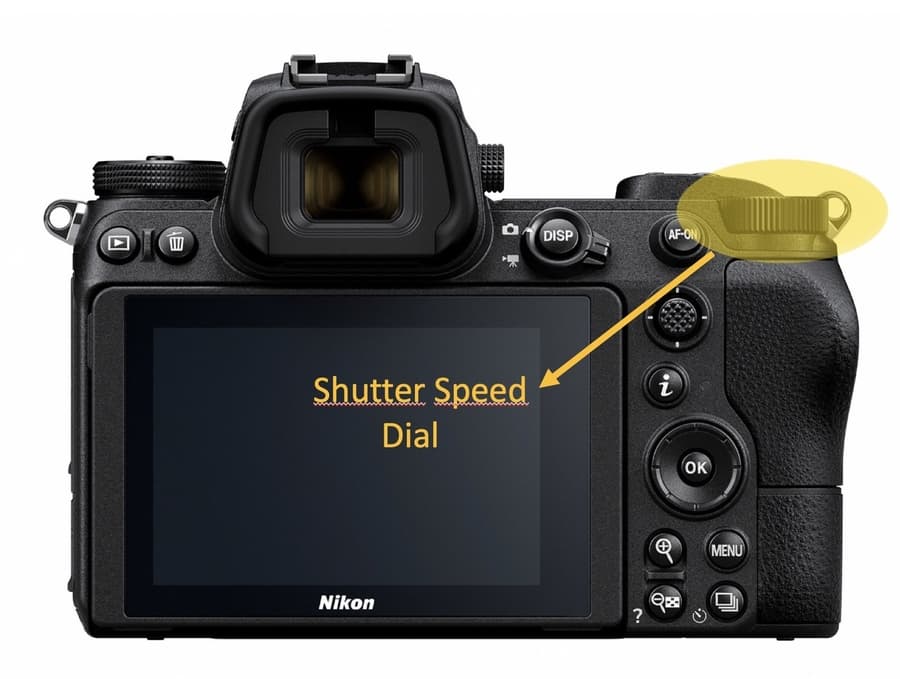
Shutter Speed Dial in Nikon Z7
Learn what the different camera buttons, wheels, and dials do in this guide.
how to do slow shutter speed photography
To do slow shutter speed photography, you must adjust the basic camera settings to take a correct exposure while using a long shutter speed.
If it's during the day, set the Base ISO (Native ISO where your camera produces the best quality and no noise), a narrow aperture (consider the side effect of diffraction if you close down your aperture below F16 as explained in our article on aperture), and decrease the shutter speed.
In daytime slow shutter speed photography, you'll likely need Neutral Density filters to reduce the light hitting the sensor, or you'll overexpose the image.
If it's at night, increase the ISO according to the limits of your camera, use a wide aperture to capture as much light as possible, and set a slow shutter speed according to the external light and scene that you want to achieve. In Milky Way photography, for example, you can do a long shutter speed photograph of 15-30 seconds.
how to do fast shutter speed photography
To do fast shutter speed photography, you'll make the same adjustments, but your goal will now be to use quick shutter speed.
The settings will depend entirely on the light and the scene, but generally, you'll have to use wider apertures to capture more light and a higher ISO to compensate and take the right exposure.
Shutter speed priority mode
The Shutter speed priority mode is the last way to set the shutter speed on the camera.
Through this semi-automatic camera mode, you'll set a fixed shutter speed setting, and the camera will automatically calculate the aperture. This mode is not very common, but it might be useful when you need to make sure that you're shooting at certain shutter speeds, like, for example, when using the shutter speed for shooting from an airplane.
What is the best shutter speed in photography?
There is no shutter speed rule; the best shutter speed in photography depends both on the light conditions of the scene and the motion with which you want to capture the elements.
That said, it's always helpful to have a rough idea of what's a good photography shutter speed depending on the subject that you're photographing.
Here is a shutter speed chart so you can look for the best shutter speed in photography at a glance:
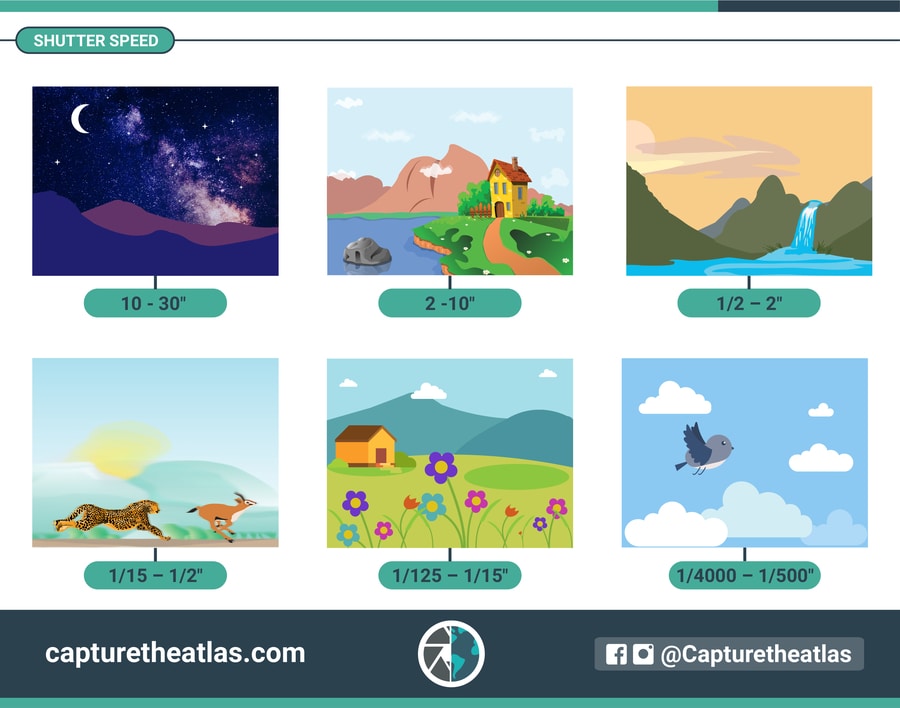
And here, you'll find more detailed information about the best shutter speed in different genres and scenes.
Shutter speed photography examples
The shutter speed definition and theory are essential, but the best way to understand shutter speed is through photography examples.
Below you'll see some shutter speed images examples related to different genres and taken using short and fast shutter speeds so you can see the difference.
fast shutter speed photography examples
Fast Shutter Speed example in landscape photography

1/100 sec, f/11, ISO 100
Fast Shutter Speed example in bird photography
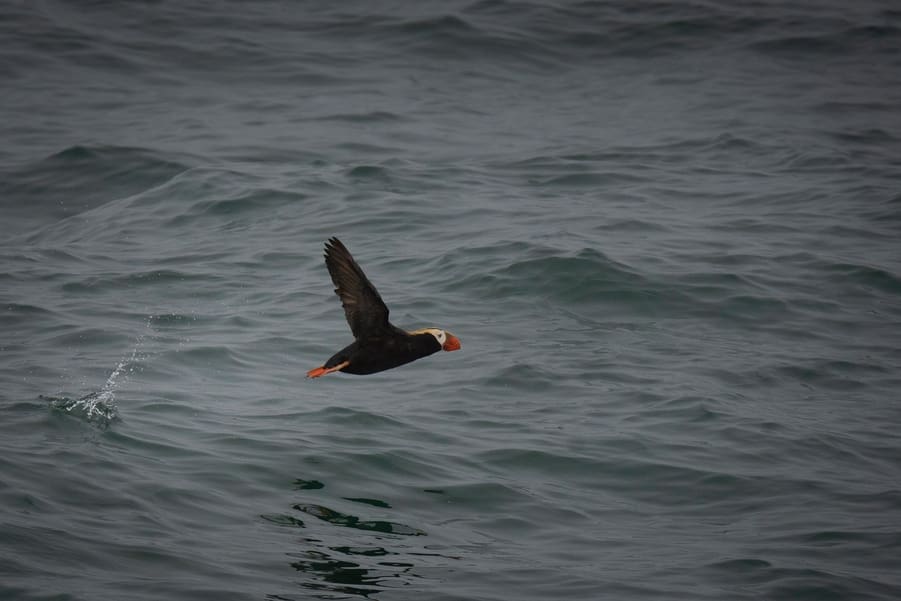
1/8000 sec, f/6, ISO 1600
Fast Shutter Speed example in portrait photography
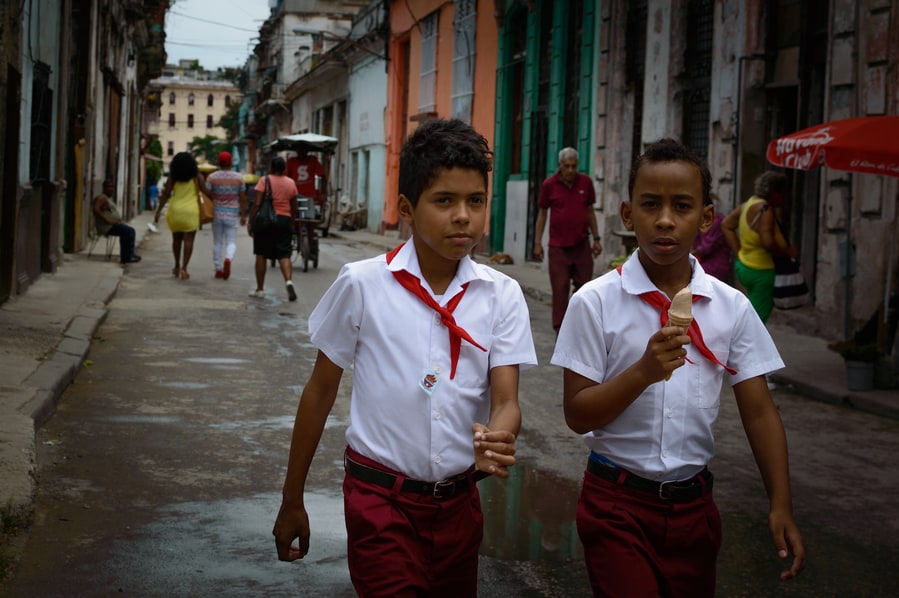
1/1600 sec. f/4.5, ISO 200
Fast Shutter Speed example in street photography
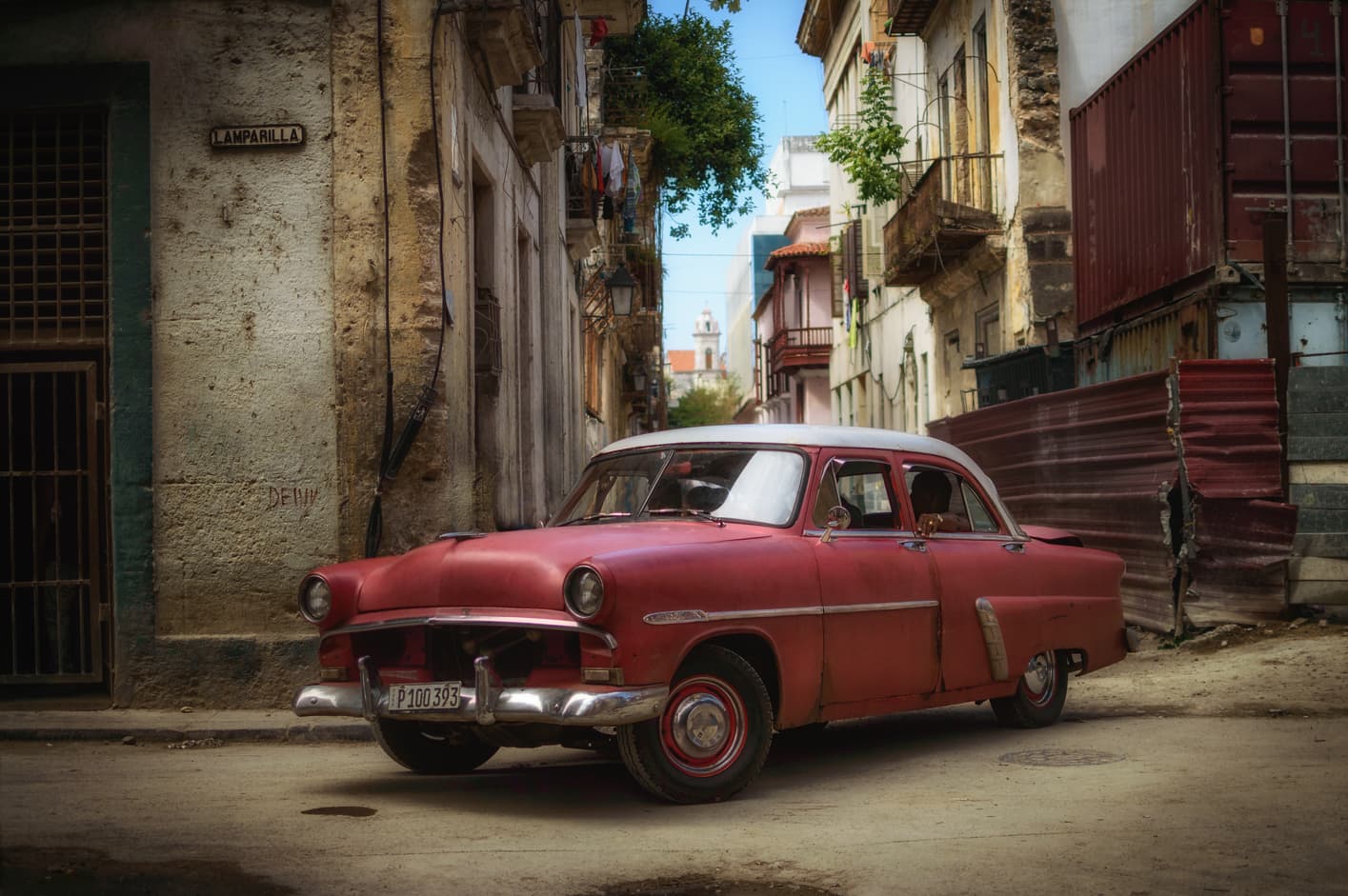
1/4000 sec, f/1.8, ISO 200
Fast Shutter Speed example in sports photography
A fast and slow shutter speed photographing sports
1/50 sec. f/5.6, ISO 400 (Left) 1/80 sec. f/5.6, ISO 400 (Right)
Slow shutter speed photography pictures
Slow Shutter Speed examples in landscape photography
Fast and slow Shutter Speed example with water
1/250 sec. f/11, ISO 200 (Left) 15 sec. f/11, ISO 200 + 10-Stop ND filter (Right)
Another example of a fast and slow shutter speed photographing seascapes
1/4 sec. f/8, ISO 320 (Left) 30 sec. f/8, ISO 320 + 6-Stop ND filter (Right)
Slow Shutter speed example in panning photography
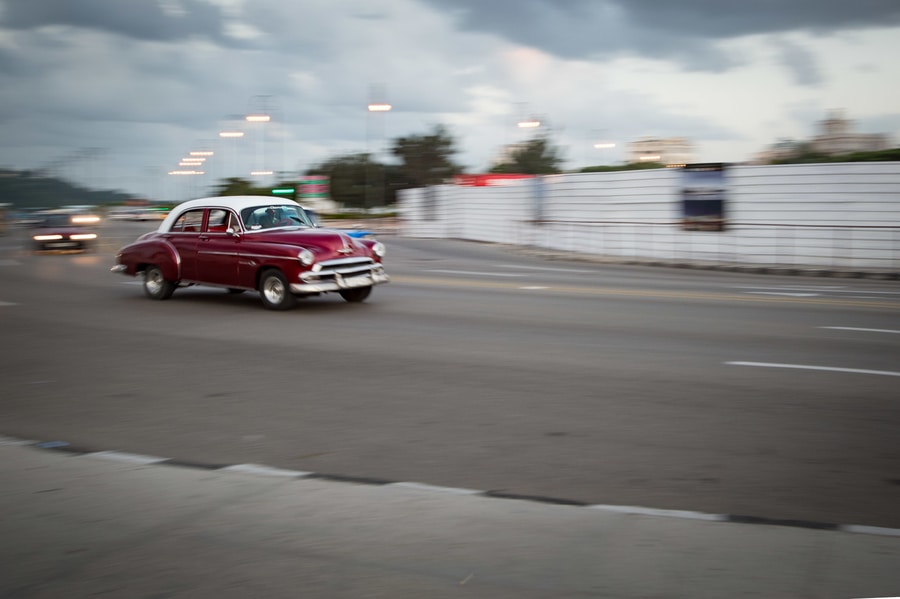
1/20 sec. f/5.6, ISO 200
Slow shutter speed to remove people example
A fast and slow shutter speed to remove people from the image
1/250 sec. f/2.8, ISO 2000 (Left) 30 sec. f/22, ISO 100 (Right)
Shutter speed F.A.Q
Below you'll find the answers to some of the most common questions for understanding shutter speed in photography:
Conclusion
Now that you've read the theory and checked out some shutter speed examples, the best way to understand what is shutter speed in photography and how it works is to put all this knowledge into practice!
Practice photographing scenes with different light and different shutter speed values, and zoom in on the images later to see how the exposure and motion change, the two main effects of shutter speed in photography.
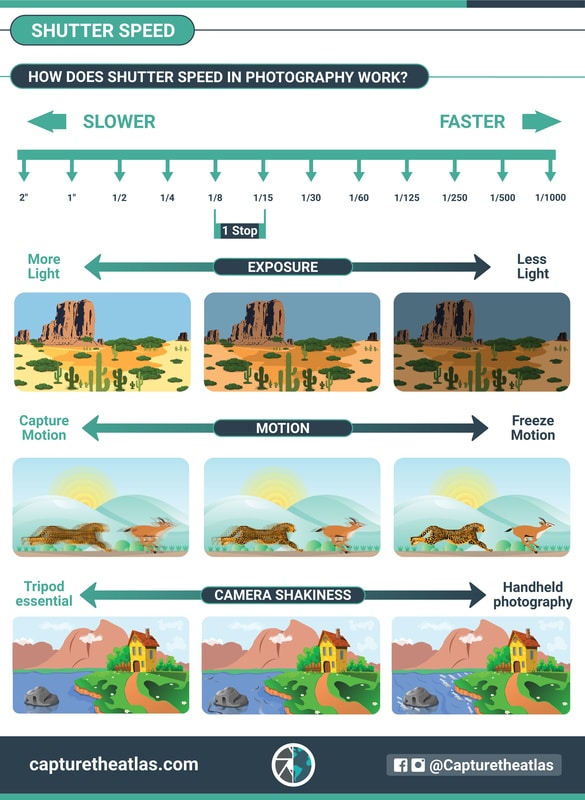
To complete your understanding of shutter speed and exposure check our guide to photography basics (also available as a PDF photography guide) or our articles about the other two basics in photography:
- Aperture
- ISO
You'll also need to understand the following concepts:
- Exposure
- The exposure Triangle
- Sharpness in photography
I hope this guide to shutter speed in photography helps increase your knowledge about this vital topic and enables you to shoot beautiful images!
Examples of Pictures at Different Shutter Speeds
Source: https://capturetheatlas.com/what-is-shutter-speed-in-photography/